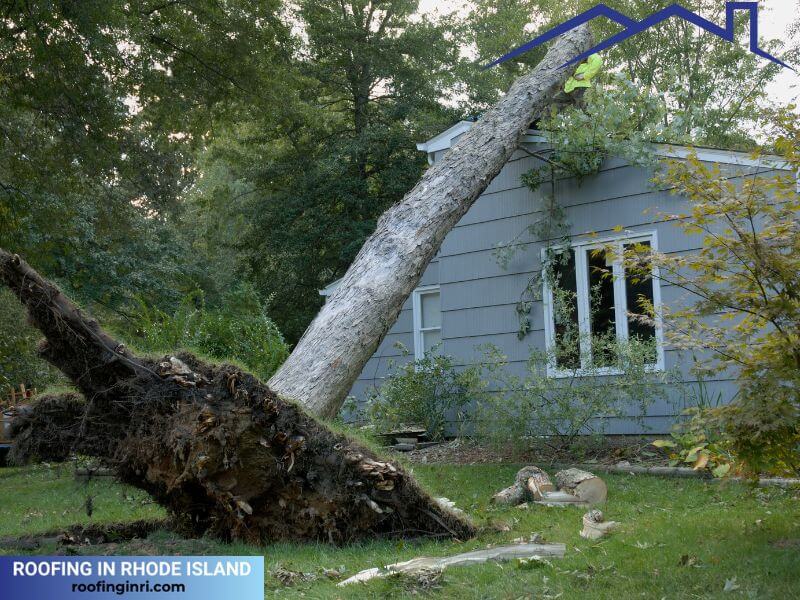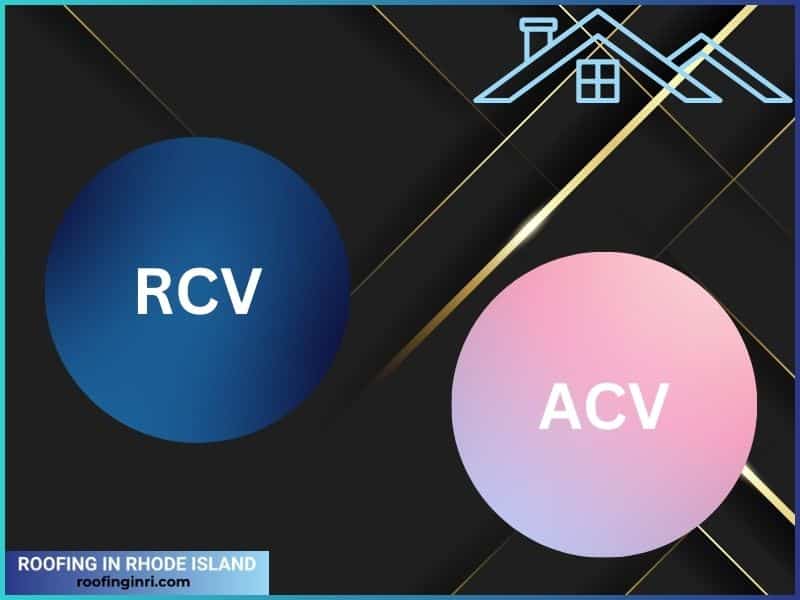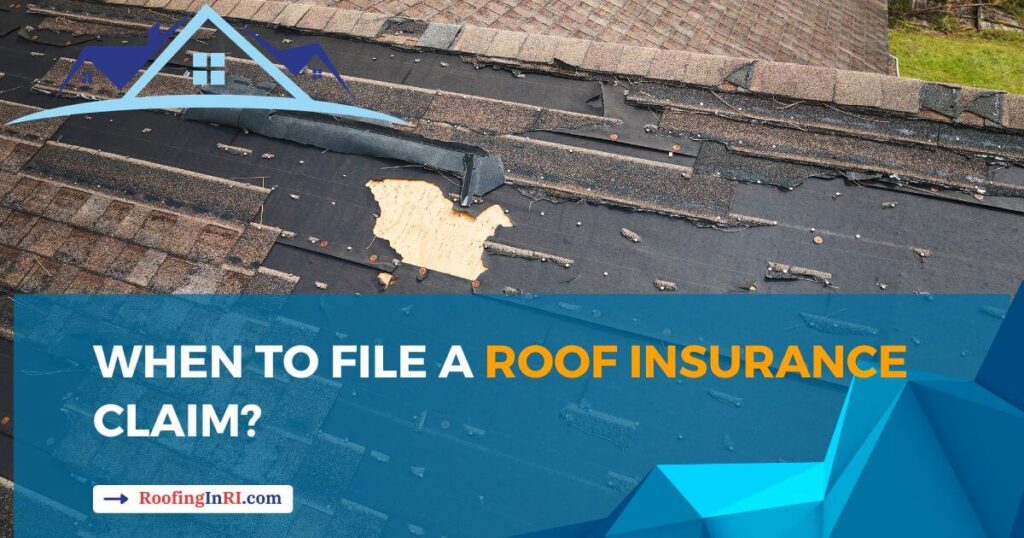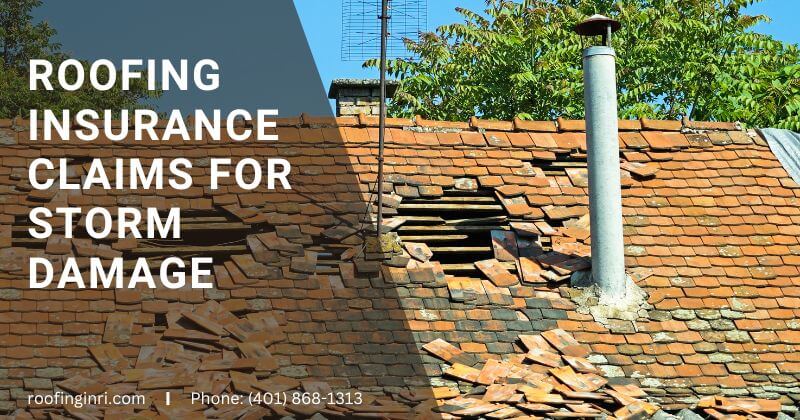When to file a roof insurance claim, or when should you avoid claiming and repairing yourself? These are the most common questions that come to every homeowner’s mind after damage. This damage could be done by flood, fire, heavy rainfall, storm, hail, etc.
You may get coverage or have your damaged roof repaired by your insurance company. However, a roof insurance claim is not always a beneficial or wise decision. Even claiming insurance can result in financial loss in the long run.
In this post, I will discuss when you should file a roof insurance claim and when you should avoid it. What situations can affect you negatively and raise the risk & rate (premium)?
Let’s get started.
When to file a roof insurance claim?

When it comes to damage, whether from severe weather, fallen debris, or wear and tear, the question of whether to file a roof insurance claim or handle repairs yourself often arises.
Here are the situations when you can claim roof insurance:
Significant damage beyond DIY repair

Filing an insurance claim will be a wise decision if your roof has suffered extensive damage that exceeds your DIY repair capabilities. These damages could be large sections of missing shingles, structural damage, or severe leaks.
After a severe hailstorm, your roof shows widespread damage with numerous dented and dislodged shingles. Attempting to repair this alone could result in incomplete fixes, leading to more extensive issues.
Related: How does recoverable depreciation work in a roof insurance claim?

Insurance claims are especially applicable when natural disasters cause damage. Insurance policies often cover such events, making it crucial to file a claim promptly.
For example, if a hurricane sweeps through your area, causing widespread roof damage, file an insurance claim immediately.
Related: 5 things you need to know about roof inspections for insurance.
Policy coverage and deductible considerations

If the estimated repair cost surpasses your deductible, filing a claim makes financial sense.
For example, if your policy has a $1,000 deductible, and the estimated cost to repair your roof is $5,000. In this case, filing a claim is worthwhile, as the insurance covers most expenses.
Related: How do you get roof replacements from your insurance company?
When to avoid filing a roof insurance claim
As mentioned earlier, filing a roof insurance claim is not always beneficial. Even if you receive the coverage, it may raise the premium.
Here are some situations when you should not claim roof insurance:
Related: Will home insurance cover a leaking roof?
Minor repairs within your skill set
If the damage is minor and falls within your skill set, opting for a DIY approach can save you time and potentially increase insurance premiums.
For example, if you can replace a few missing or damaged shingles, it’s worth not bothering your insurance company. In this scenario, handling the repair yourself is a cost-effective solution.
Here, the DIY approach does not necessarily mean you must do it yourself. You can hire roofers to do it.
Related: 11 main reasons for denying roof insurance claims and solution.
If you have recently filed many claims, it can significantly increase your insurance premium. That’s why I mentioned that claiming insurance is not always a wise decision.
Evaluate whether the repair cost justifies the potential long-term increase in premiums.
Suppose you experience a small roof leak you can fix with little effort and money. Considering your deductible and potential premium increases, handling the repair yourself may be more cost-effective.
Read also: How to claim roofing insurance for storm damage?
Every adjuster will inspect and evaluate the roofing condition before they make any decision. If your roof is damaged due to negligence or maintenance, your company may not cover the cost.
Routine inspections and timely repairs are crucial to preventing such issues.
Read also: Signs of roof damage and your options to fix them properly.
Frequently asked questions
While there isn’t a specific universal threshold, filing more than two or three insurance claims within three years can be considered too many by some insurance companies. However, this can vary, and checking your specific insurer’s policies is crucial.
For example, if you file three claims quickly for relatively minor issues, like small roof repairs, it may signal to the insurance company that your property is at a higher risk for future claims. This could increase premiums or, in extreme cases, result in non-renewal of your policy.
Consider a scenario where a homeowner files two claims within a year – one for water damage due to a burst pipe and another for roof damage caused by a storm. While both incidents are valid, the claims frequency might prompt the insurer to reevaluate the policy and adjust premiums accordingly.
In summary, while there’s no fixed number, homeowners should exercise caution and be strategic about filing claims, as a high frequency may impact insurance premiums and policy renewals. Always check with your insurer to understand their specific thresholds and policies regarding the number of claims.
A deductible refers to the money a policyholder pays before their insurance coverage. It represents the initial portion of any claim the policyholder is responsible for.
The deductible balances the financial risk between the company and the policyholder.
Please visit another post to learn more about its type, calculation process, etc.
Conclusion
Knowing when to file a roof insurance claim and when to handle repairs yourself is crucial for homeowners. As a roofing contractor, I would suggest asses the damage size, considering policy coverage, the risk of raising the premium, and the roof age before you make a decision. Also, if you have neglected the regular maintenance, it would not be worth claiming.



